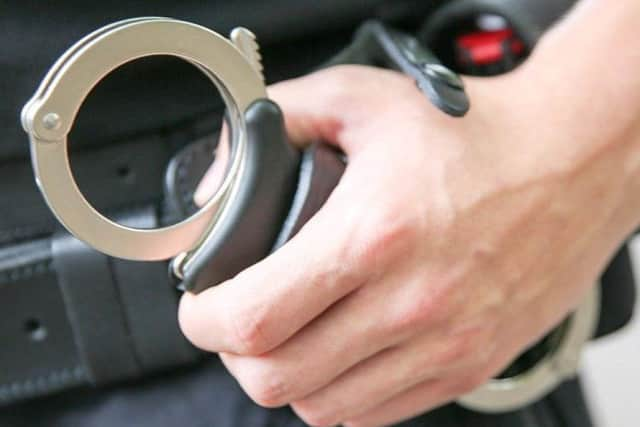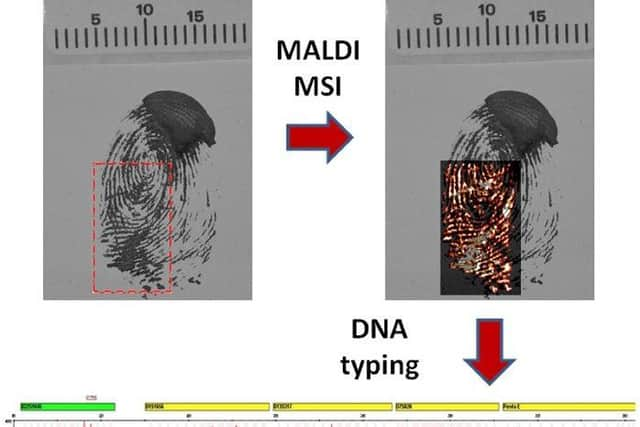Fingerprint breakthrough from Sheffield Hallam University to help in fight against crime
A team of researchers from Sheffield Hallam University, alongside the Israel police force developed the new forensic fingerprint method to help police have a better understanding of crime scenes from blood evidence.
The researchers found that technology called Matrix Assisted Laser Desorption Ionisation Mass Spectrometry Imaging (MALDI-MSI) can be applied at crime scenes for the detection of human blood and DNA-typing from enhanced fingerprints.


Advertisement
Hide AdAdvertisement
Hide AdMALDI-MSI is a powerful technology, normally used to map drugs, pharmaceuticals and biological molecules within tissue sections. In fingerprinting research, the technology provides multiple images of such species in fingermarks and provides biometric information as well as intelligence on possible lifestyle or suspect ‘activities’ of criminals.
But the new method means that suspect identification through DNA can be carried out alongside MALDI-MSI to test for the presence of blood, so that police can identify which biofluid the DNA originated from and the possible perpetrator.
Researchers say it also helps police to associate a victim’s blood with the perpetrator’s fingermark - therefore placing the suspect at the scene of a crime.
Professor Simona Francese, the project lead from Sheffield Hallam University, is one of 60 leading world researchers in the International Fingerprint Research Group - a forensic identification researcher group.


Advertisement
Hide AdAdvertisement
Hide AdProfessor Francese highlighted that although MALDI-MSI technology is already used in police casework, this new development would “increase” opportunities for it to be used.
“We are very excited about this research as it demonstrates, once more, that technology developed by academics can be integrated into existing operational police workflows," Professor Francese told The Yorkshire Post.
She added: "Our research has found that, within the system investigated, DNA profiling is still possible after the application of the method as a confirmatory test for blood detection and visualisation in fingermarks, to help police narrow down the number of suspects and better understand a crime scene."
The Israel police force co-authored the study and is aiming to use MALDI-MSI technology in it's CSI and crime lab to investigate blood evidence.


Advertisement
Hide AdAdvertisement
Hide AdConventionally, fingerprints are found at a crime scene by using chemical or physical treatment to visualise the marks and enable the comparison with fingerprint records on national police databases to identify a suspect.
Prof Francese added: "As DNA analysis provides such crucial intelligence, it is a major breakthrough that we’ve been able to demonstrate that the application of the technology is not detrimental to this analysis. We could not be more eager to further this research."
Fingerprint Research Group and fighting crime
The latest development by the Fingerprint Research Group from the Sheffield Hallam University is part of the team’s ongoing research into how fingerprint technology can provide crime investigators with additional biometric information about a criminal's activities prior to committing a crime.
This can relate to the detection of drugs, hair and cleaning products, condom lubricants and blood, with the possibility to reliably confirm the presence of blood and its origin, whether human or animal.
__________
Support The Yorkshire Post and become a subscriber today.
Advertisement
Hide AdAdvertisement
Hide AdYour subscription will help us to continue to bring quality news to the people of Yorkshire. In return, you'll see fewer ads on site, get free access to our app and receive exclusive members-only offers. Click here to subscribe.
